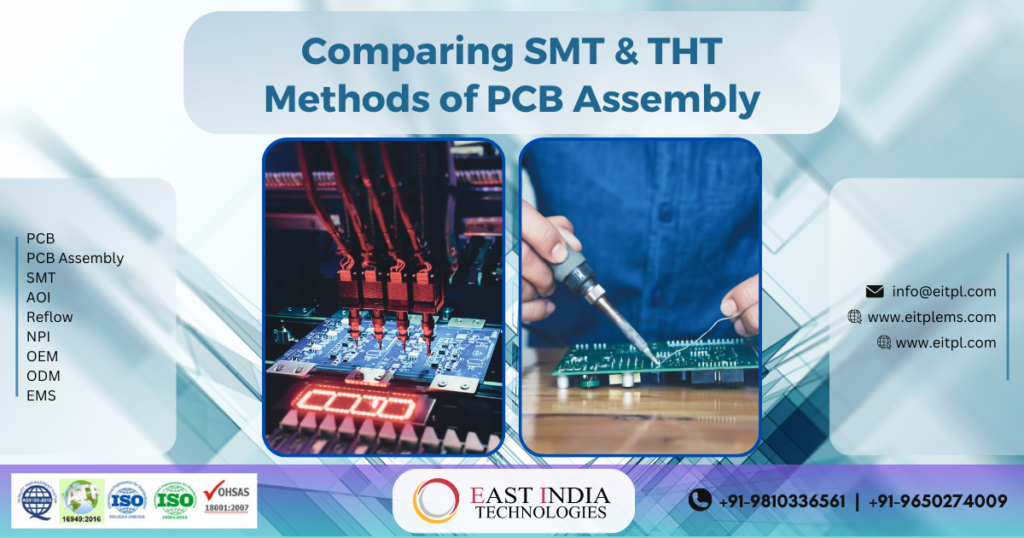Comparing SMT & THT Methods Of PCB Assembly
SMT & THT are very commonly used terms in the electronics industry. In order to assemble PCBs, these two technologies are widely used. But what exactly are they & how do they differ from each other? This article has the answer to all these questions.
Surface Mount Technology (SMT):
SMT (abbreviation for Surface Mount Technology) is a method where electronic components are placed directly onto the surface of a Printed Circuit Board (PCB).
The main steps involved in SMT assembly are:
- Solder paste application: The PCB pads are coated with the solder paste.
- Component insertion via AI: SMT components are placed onto the paste.
- Automated reflow soldering: Heat melts the solder to form a joint.
Apart from these, another step involved for Quality Assurance in the next step is the advanced AOI (Automated Optical Inspection).
Advantages of SMT:
- High precision: SMT PCB assembly is highly precise and easy to carry out on properly equipped production lines.
- Miniaturization: It allows for significant miniaturization of the created electronic devices.
- High production speed: Very high production speed with relatively low assembly costs.
Through Hole Technology (THT):
Through Hole Technology (THT) is a method where leads of the electronic components are inserted into drilled holes in the PCB and soldered to the pads on the other side. In some regions, this same process is also referred to as MI (Manual Insertion).
The process of THT typically involves:
- Manual component insertion through holes: The leads of the components are inserted into the drilled holes.
- PCB soldering: The pads on the other side of the PCB board are then soldered/connected to the leads of the electrical components.
- Manual inspection: Once the PCB is assembled, a team of skilled staff do the usual inspection/ quality testing.
Advantages of THT:
- Durability: THT creates a strong mechanical and electrical connection between the component and the board, making it an ideal choice for high-reliability and durability applications.
- High-power handling: THT is able to handle high-power components, making it an ideal choice for power electronics applications.
- Cost-effective: The process of THT is relatively straightforward, making it a cost-effective option for manufacturers.

Conclusion:
While SMT offers precision, miniaturization, and high production speed, THT provides durability, high-power handling, and cost-effectiveness. Both technologies have their own unique advantages and are chosen based on the specific requirements of the PCB assembly.
We are East India Technologies Pvt Ltd (EITPL), one of the leading EMS companies in India. Contact us at info@eitpl.com if you’re seeking any EMS services like PCB assembly services, SMT, OEM, or ODM, NPI, etc.
